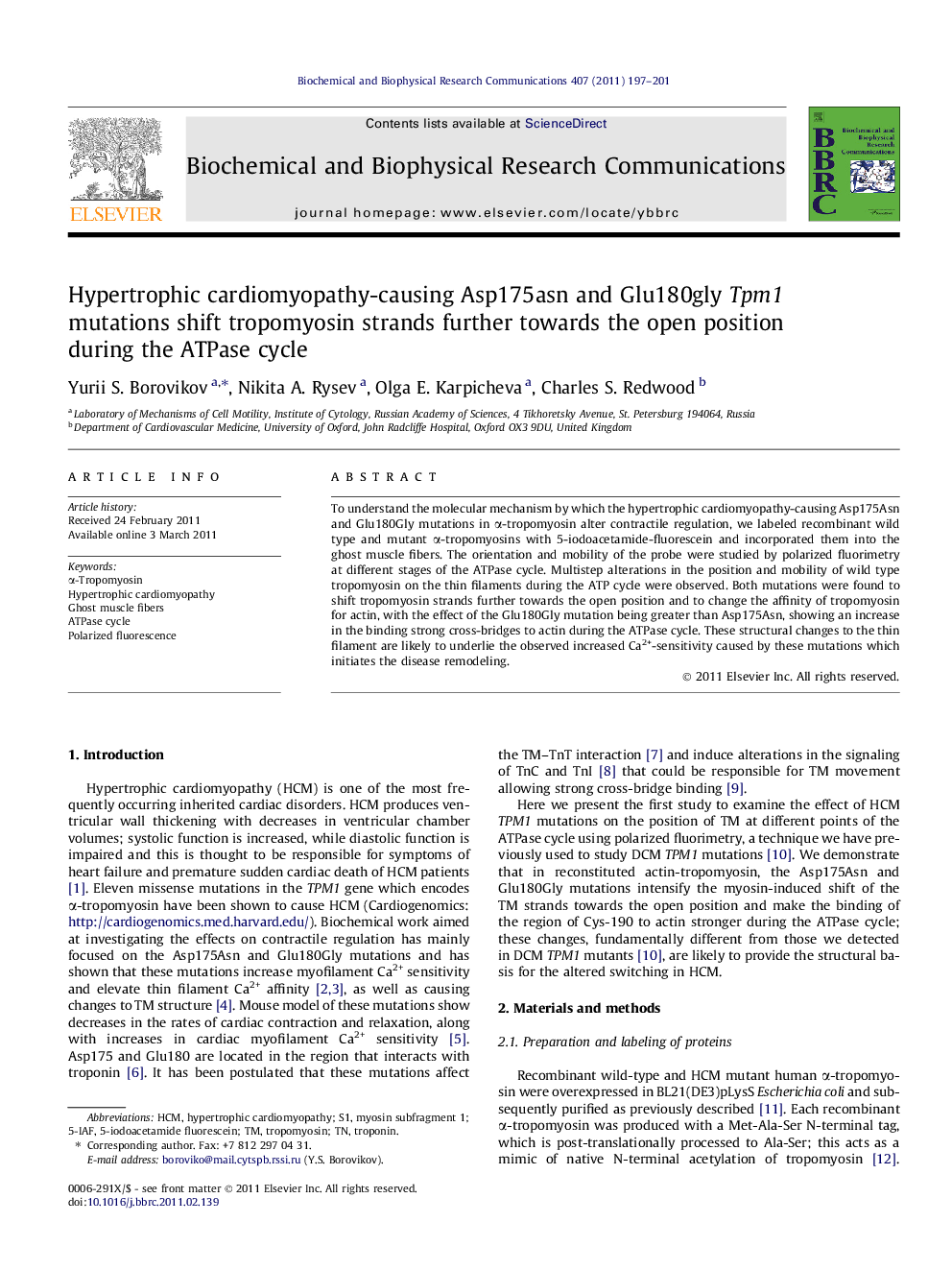| Article ID | Journal | Published Year | Pages | File Type |
|---|---|---|---|---|
| 1930877 | Biochemical and Biophysical Research Communications | 2011 | 5 Pages |
To understand the molecular mechanism by which the hypertrophic cardiomyopathy-causing Asp175Asn and Glu180Gly mutations in α-tropomyosin alter contractile regulation, we labeled recombinant wild type and mutant α-tropomyosins with 5-iodoacetamide-fluorescein and incorporated them into the ghost muscle fibers. The orientation and mobility of the probe were studied by polarized fluorimetry at different stages of the ATPase cycle. Multistep alterations in the position and mobility of wild type tropomyosin on the thin filaments during the ATP cycle were observed. Both mutations were found to shift tropomyosin strands further towards the open position and to change the affinity of tropomyosin for actin, with the effect of the Glu180Gly mutation being greater than Asp175Asn, showing an increase in the binding strong cross-bridges to actin during the ATPase cycle. These structural changes to the thin filament are likely to underlie the observed increased Ca2+-sensitivity caused by these mutations which initiates the disease remodeling.
► We used polarized fluorimetry to assess tropomyosin’s position on thin filaments. ► Tropomyosin movement was measured at different stages of ATPase cycle. ► Two HCM α-tropomyosin mutants were compared with wild type α-tropomyosin. ► During ATPase cycle, both mutants moved more to the filament periphery = ON state. ► These structural changes are likely to cause the increased Ca2+-sensitivity in HCM.
